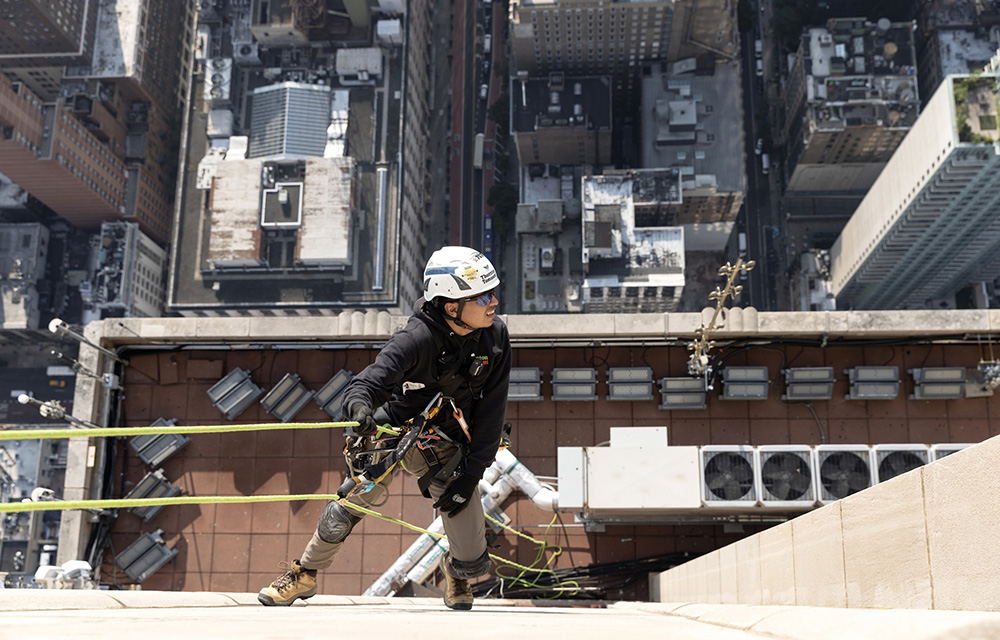Construction logistics and access challenges in a pandemic - by Tracy Lea Neff

Unispace
Over the last year, the construction industry like many other industries have faced various impacts from the pandemic. One of the largest hurdles they have had to overcome is the lack of access to job sites. Around the world safety restrictions have been instituted, ranging from international lockdowns to limiting just two people to each freight elevator, which a year ago were shuttling dozens of construction workers in one cabin. This has required construction managers to find innovative solutions to move projects forward without incurring additional risks or delays.
Integrating technology into the construction process has become a necessity for many construction teams to maintain communication with all parties, monitor site progression, and complete various tasks typically done in person. Technology platforms like OpenSpace.ai provide 3D photo documentation capabilities allowing project teams and stakeholders to virtually track and tour job sites they’re not able to visit in person. Other apps offering virtual assistance like advanced calendaring, geo-locating and equipment tracking, have all helped to ensure seamless continuity over the past year.
Outside of on-site challenges, access to commodities have caused issues with project progression. When foreign steel and lumber companies experienced supply chain shortages, many construction firms turned to domestic providers. As a result, understanding the global landscape with local market knowledge has been crucial when looking for and sourcing materials. Having local connections has enabled many construction jobs to continue with limited interruptions.
Maintaining a strong client experience, even while incurring internal and external challenges is important. Just like with their internal teams, construction managers need to make sure their key stakeholders and decision makers are informed, comfortable, and satisfied through the process. Especially if teams are unable to visit site locations, finding work arounds, communicating, and reinforcing commitment is key.
Through an integrated approach blending strategy and design with pre-construction and delivery, issues with access and other hurdles are resolved early on in the project. Combining these services into one process removes the risk of cost overrun, scheduling delays, and other risks. When construction is involved in the beginning, during the planning stages, potential issues can be communicated and minimized with a collaborative plan of attack. This enables teams to deliver projects more quickly without sacrificing quality. Especially during uncertain times, a seamless process and end-to-end experience can establish a long-standing partnership with clients.
An example of leveraging technology and an end-to-end process to overcome significant COVID-19 hurdles is when Unispace managed a project in Canada for an American client, and both the project team and client were unable to cross the border. The team had to get creative to move the project forward while keeping the client informed and satisfied. OpenSpace along with a streamlined communication across internal and external parties allowed Unispace to navigate the project completely remotely, without ever visiting the job site. This type of agile process is expected in the future as firms and their clients continue to navigate the evolving real estate landscape.
Managing large commercial real estate projects nationally and globally requires a seamless approach enabled by workplace intelligence and technology to meet the pace of change. The pandemic has challenged construction and design executives to push the boundaries and expand their horizons to incorporate new tools and processes. By leveraging technology, knowing the local markets, and focusing on the client experience, all within an end-to-end approach, construction managers can complete projects successfully even under difficult circumstances.
Tracy Lea Neff is the operations director, Americas at Unispace.
NYC mayor and DOB release comprehensive façade inspection and safety study conducted by Thornton Tomasetti








.gif)
.jpg)
.gif)
.gif)